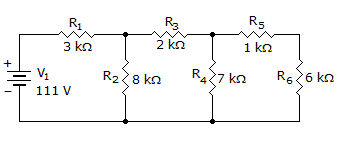

Series-Parallel Circuits - Technical MCQs
Q1: What is the power dissipated by R2, R4, and R6?A
P2 = 417 mW, P4 = 193 mW, P6 = 166 mW
B
P2 = 407 mW, P4 = 183 mW, P6 = 156 mW
C
P2 = 397 mW, P4 = 173 mW, P6 = 146 mW
D
P2 = 387 mW, P4 = 163 mW, P6 = 136 mW
ANS:A - P2 = 417 mW, P4 = 193 mW, P6 = 166 mW Simple solution:- |


For help Students Orientation
Mcqs Questions
One stop destination for examination, preparation, recruitment, and more. Specially designed online test to solve all your preparation worries. Go wherever you want to and practice whenever you want, using the online test platform.


